
Alumni Share Their Journeys in Rehabilitation Medicine
By Anastasios Karoussos, OMS-2 丨 April 2, 2025
Physical Medicine and Rehabilitation (PM&R) is a unique specialty that focuses on restoring function and improving quality of life. Despite its crucial role in healthcare, it often flies under the radar for many medical students. To shed light on the field, I spoke with alumni from the Marian University Tom and Julie Wood College of Osteopathic Medicine (MU-WCOM) who pursued PM&R to understand their journeys, challenges, and insights. Through this blog series, I hope to provide perspective on why medical students should consider a career in this valuable and rapidly growing specialty.
In this post, we will explore the role of a PM&R physician in healthcare, featuring the input of alumni reflecting on their experiences in the field of rehabilitation medicine.

Brandon Budiman-Steinley, DO ‘17
“I ended up taking a position in Canada in a smaller community of about 100,000 people. I'm the only rehab doctor currently in this location. Because of this, my practice is a mix of both in-patient and out-patient, mostly seeing teens and adults. I see a variety of different conditions ranging from musculoskeletal injuries to ALS to neuromuscular conditions. I also see children with movement disorders, cerebral palsy, and spinal cord injuries. And then, a lot of individuals with strokes. I would say that's the number one population that I see.”
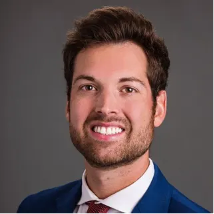
Bryan Wacker, DO '22
“My residency program is at the University of Missouri. It's at a major academic institution, but it's in the center of Missouri. So, I take care of a lot of farmers who live in these small towns in the middle of Missouri, age-wise, mostly the older population. And I will say it's a tough population to work with because most patients have never seen the doctor. They notice something, and then one thing leads to another, and the patient has to have his leg amputated. They have a lot of comorbidities. The hospital is also a level one trauma center, so I see a lot of motor vehicle accidents with bilateral broken femurs and things like that.”
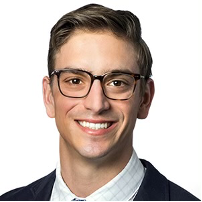
Austin Boos, DO ’20
“Broadly, I think the biggest thing that unites most PM&R people is the idea of working in a team because the specialty is 100% team-driven. We are intricately tied with other kinds of healthcare professionals. At first, we are referred to, likely by other specialists in-patient, and then we work with speech therapists, physical therapists, occupational therapists, among many others to provide care to our patients.”

Brandon Budiman-Steinley, DO ‘17
“I believe that developing the ability to work with other team members is essential for our specialty. You have to be able to consult other specialists and therapists and determine how to effectively get the patient back into the community.”
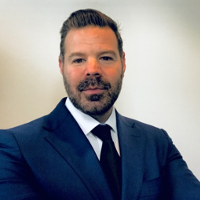
Seth Katzen, DO ’17
“You're coordinating care with so many different multidisciplinary providers. You're not just off on your own doing your own thing like you are in, let’s say, surgery. As an interventional PM&R doctor, I mostly work with orthopedic surgeons and neurologists. We also have our own physical therapy group nuzzled into our practice.”

Austin Boos, DO ’20
“PM&R is a value-added profession, to promote people's functionality. Not to say that there is any less of a push to timely address patient concerns, but the patient is not going die if I can't help them with their chronic pain fast enough. It’s great that, in this specialty, I have the ability to address my well-being and not burn out, as I can't be a good doctor if I am running ragged.”
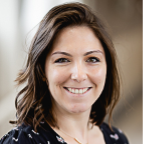
Mackenzie Sacks, DO ’21
“I can only really speak to my program and the way we have it set up, but I think that the lifestyle of rehab is something that draws a lot of people towards it as well. At this point in my training, it's like I have every weekend off and I get all the major holidays off with the exception of one that I have to work. I can also have a dog and I can be home in time to feed her and take her for walks, and we can go on vacations and all that kind of stuff, which I think is different than a lot of other specialties.”

Seth Katzen, DO ’17
“The work-life balance during training and residency will be highly dependent on the program, your call schedules, how big your program is, how many residents are in each class to split up the work, etc. However, I would say that, for the most part, PM&R has a very good work-life balance, regardless of the program you go to. As PM&R doctors, we're there to improve people's function and concentrate on their wellness. Because of that, the programs should have some sort of focus on that as well and ensure that the residents, the trainees, and the attendings are also living their best lives.”

Austin Boos, DO ’20
“What I've seen in my experience and, hopefully, this current trend will continue, is that we're starting to get utilized more and more by the hospital systems. I think we will continue to be utilized, as we ultimately provide a non-interventional approach to treating the musculoskeletal system and improve patient outcomes.”
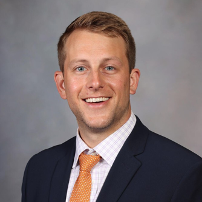
Ben Kopecky, DO '21
“I've talked to a number of senior faculty about this, like people on the American Board of PM&R and experts in their field and other institutions. I have heard that in the last 20 years, the role of the general physiatrist has really faded. That has certainly been true in my residency class, as many people have decided on a subspecialty before they even begin their residency. I don't think it's ever a good thing for you to diminish the diversity of your field. But, at the same time, when you go through these fellowships, you're getting just exceptional training.”

Brandon Budiman-Steinley, DO ‘17
“I think it's important that, as a specialty, we continue to embrace technology more and more. Like utilizing ultrasound for injections, utilizing robotics in our care and management, and spinal cord stimulators for pain management.”
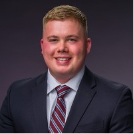
Collin Young, DO ’22
“The specialty is becoming more and more popular as people are starting to understand what it is.”

Mackenzie Sacks, DO ’21
“I think that there are a lot of different technologies coming out for rehab with bracing, stimulators, etc. that will increasingly be integrated into patient care. I am also seeing that doctors have a tendency to become hyperspecialized. Not to say that it's a bad thing, but I think that we're starting to lose the ability to care for the general stuff because of it.”
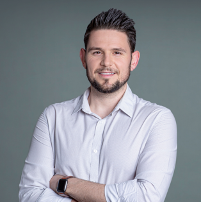
Milan Ristic, DO '18
“This is a good question because that's kind of controversial. Most people, as you will see in PM&R, will be starting and already have their mind set on pain or sports, or interventional spine subspecialties. The reason being that the lifestyle is good and the money is pretty good too. And so, you're kind of losing the essence of a true PM&R generalist. Because of that, you get a lot more subacute rehab. When someone has a huge stroke, they should get intensive rehab and go home. However, this hyperspecialized system lacks generalists, thus forcing these patients into a subacute facility where they will stay for four or five months or however long it takes for them to become more autonomous.”

Seth Katzen, DO ’17
“I feel that some of the subspecialties of PM&R are set up in a way where most of the fellowship programs are not based within PM&R housing. For example, I am an interventional spine and pain specialist trained by an anesthesiology program. I've seen that the skills that we bring to the table are acknowledged more and more and that a lot more programs have become much more open to taking in people with a PM&R background.”
PM&R is a rewarding specialty that addresses the well-being of patients, having a particular emphasis on musculoskeletal and neuromuscular conditions. In addition, for the most part, it is a field that allows for a good work-life balance, even through residency, making the specialty increasingly more popular among medical students. Moreover, it is a growing area in medicine and is evolving both with regard to its popularity and its scope of practice. Notably, PM&R is a specialty that attracts physicians with a collaborative spirit, as physiatrists work in a broad, interdisciplinary environment. Tune in for the next post, where we will discuss the good, the bad, and the ugly of PM&R.
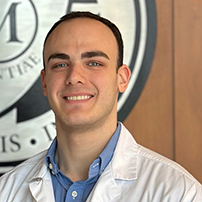
Anastasios Karoussos, OMS-2
Anastasios Karoussos is a second-year student at the Marian University Tom and Julie Wood College of Osteopathic Medicine with a strong interest in Physical Medicine and Rehabilitation. He is passionate about holistic, personalized healthcare, disability health advocacy, mentorship, and education.